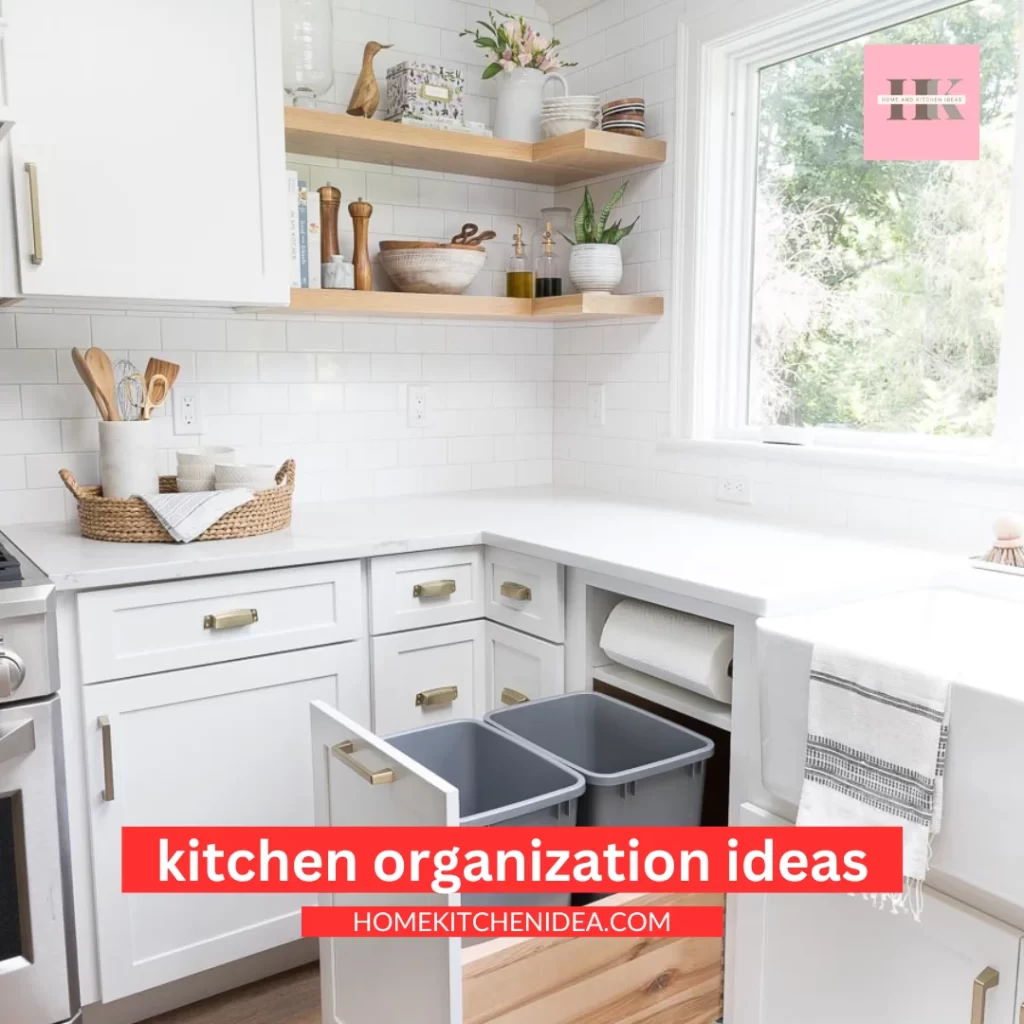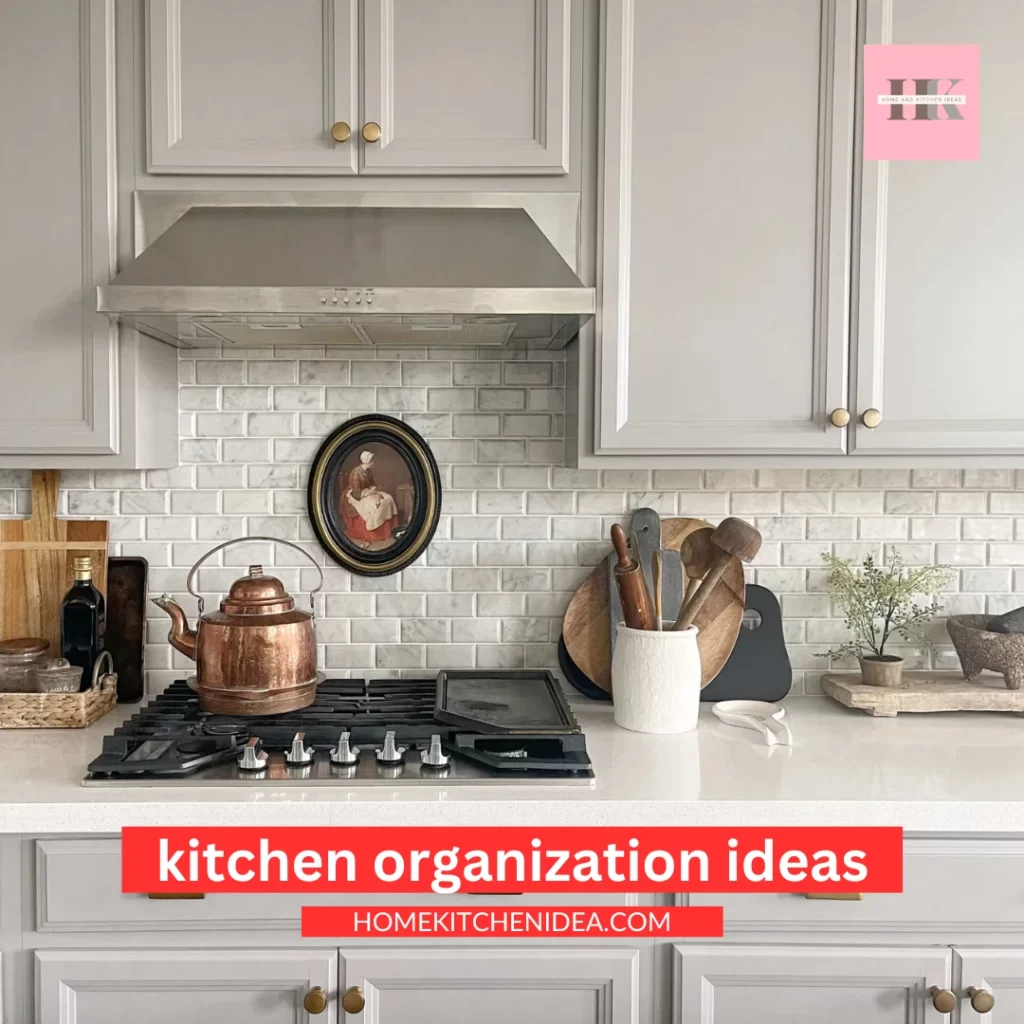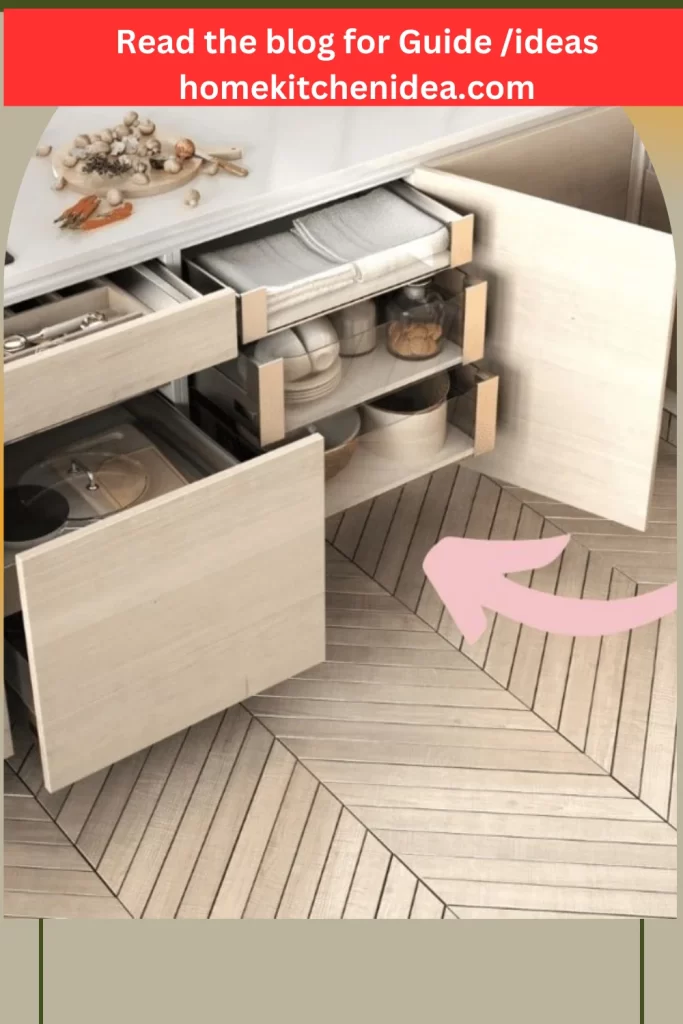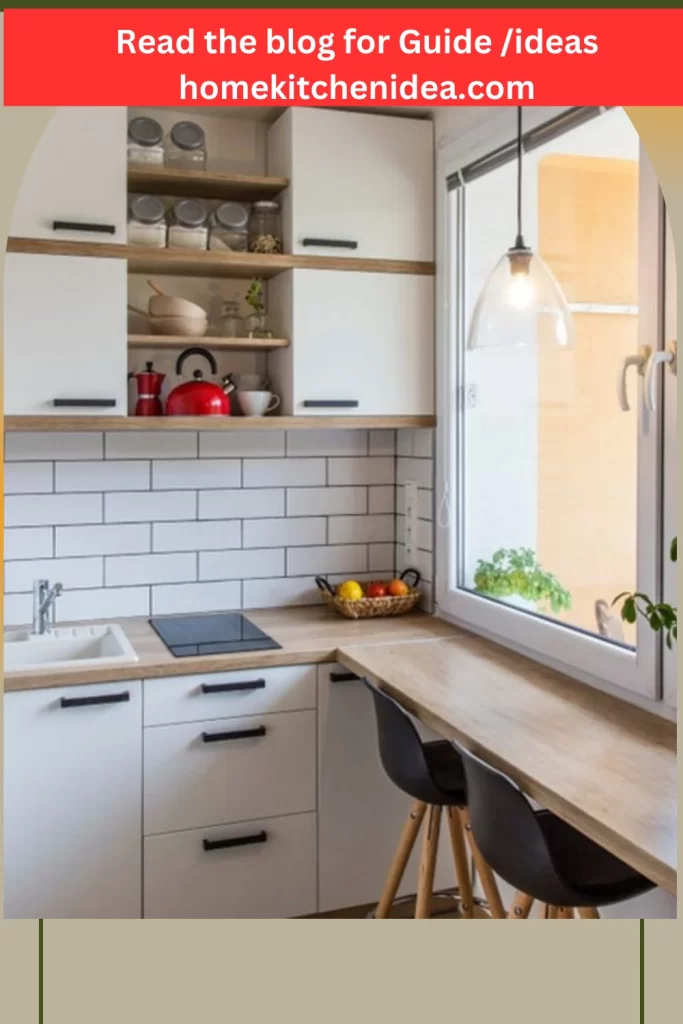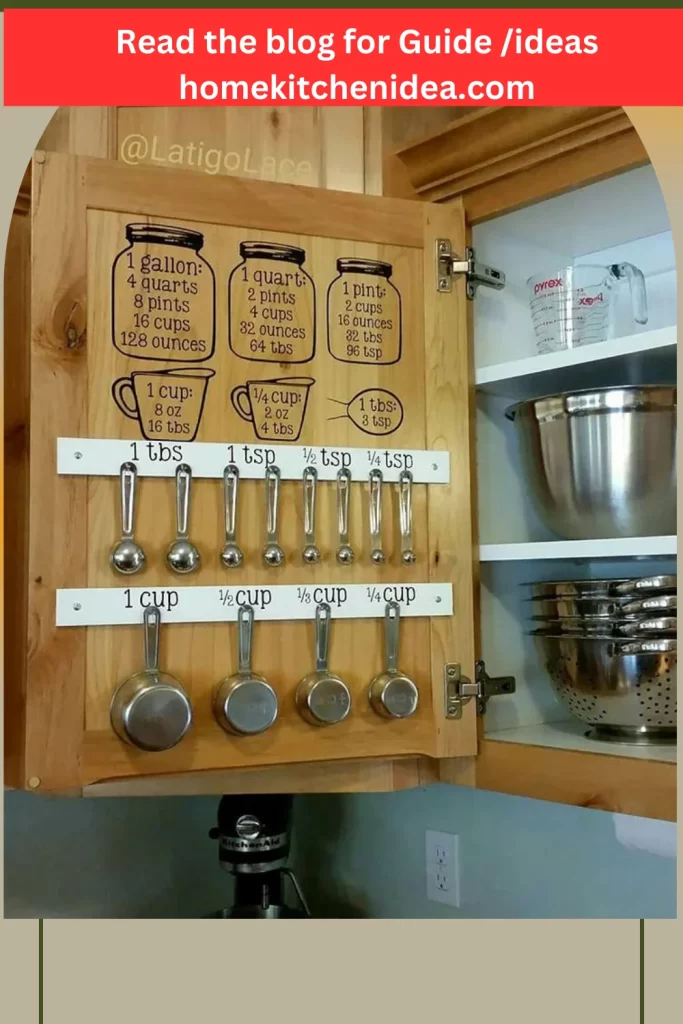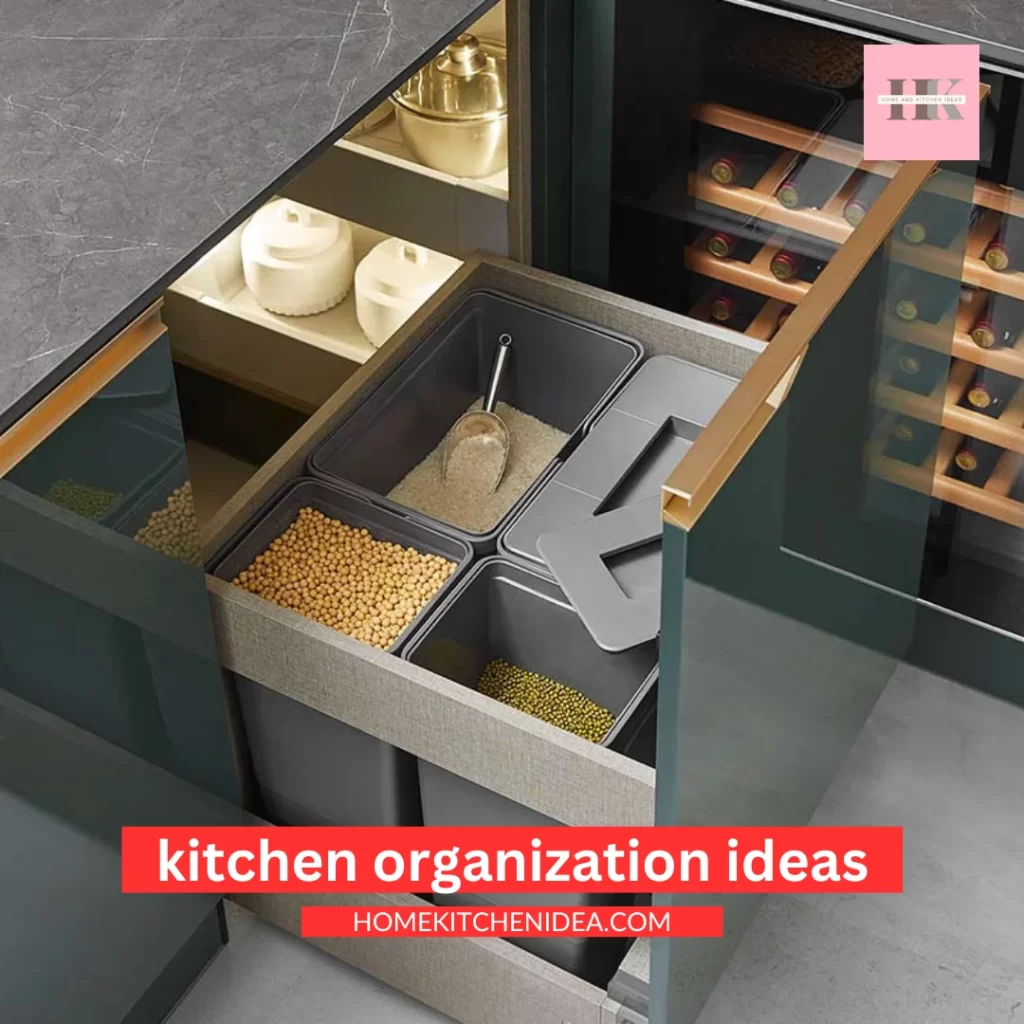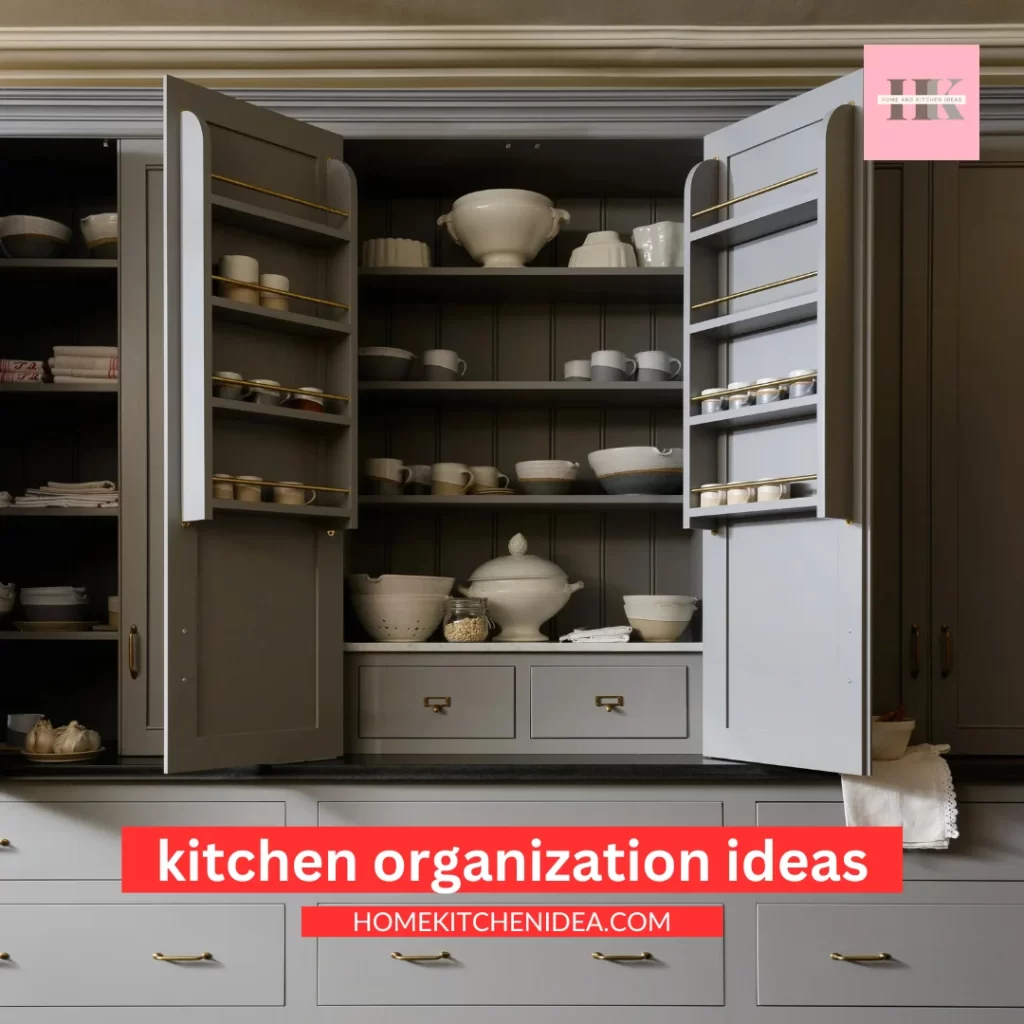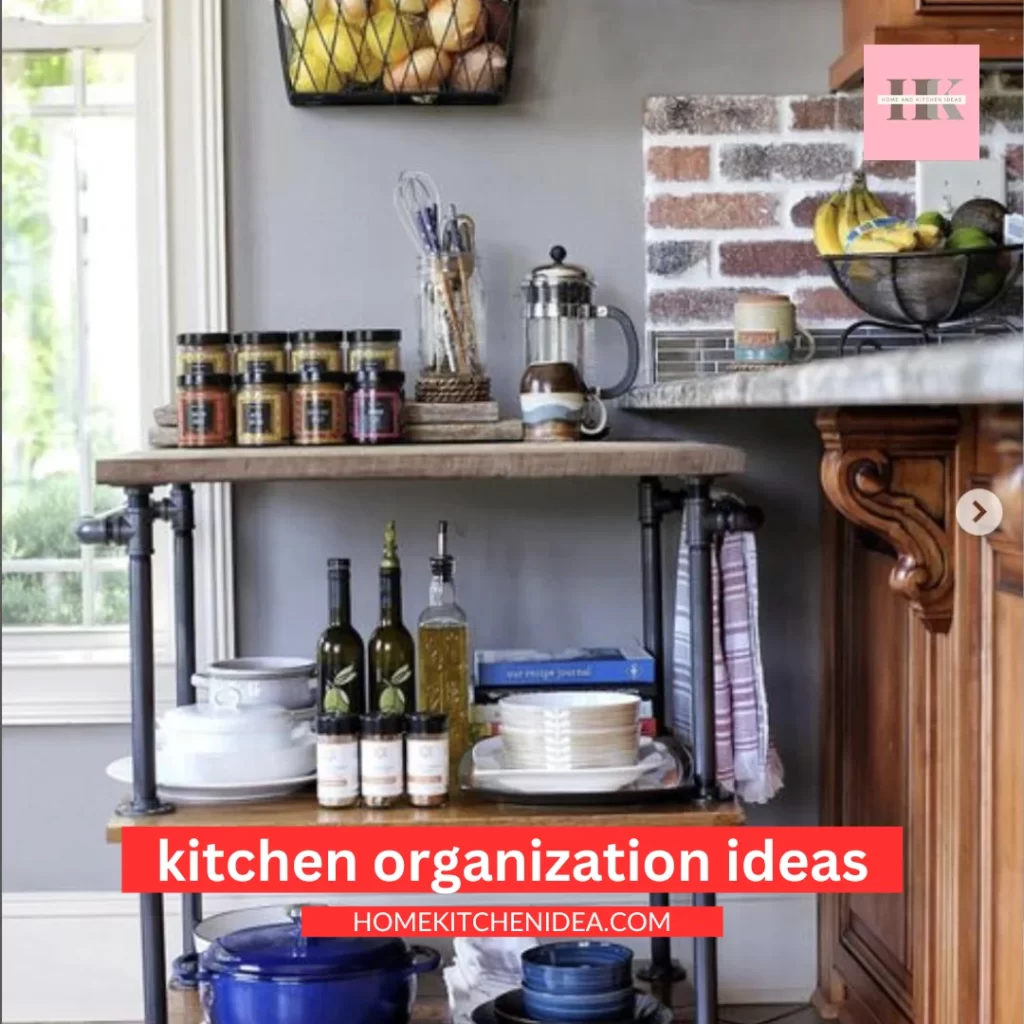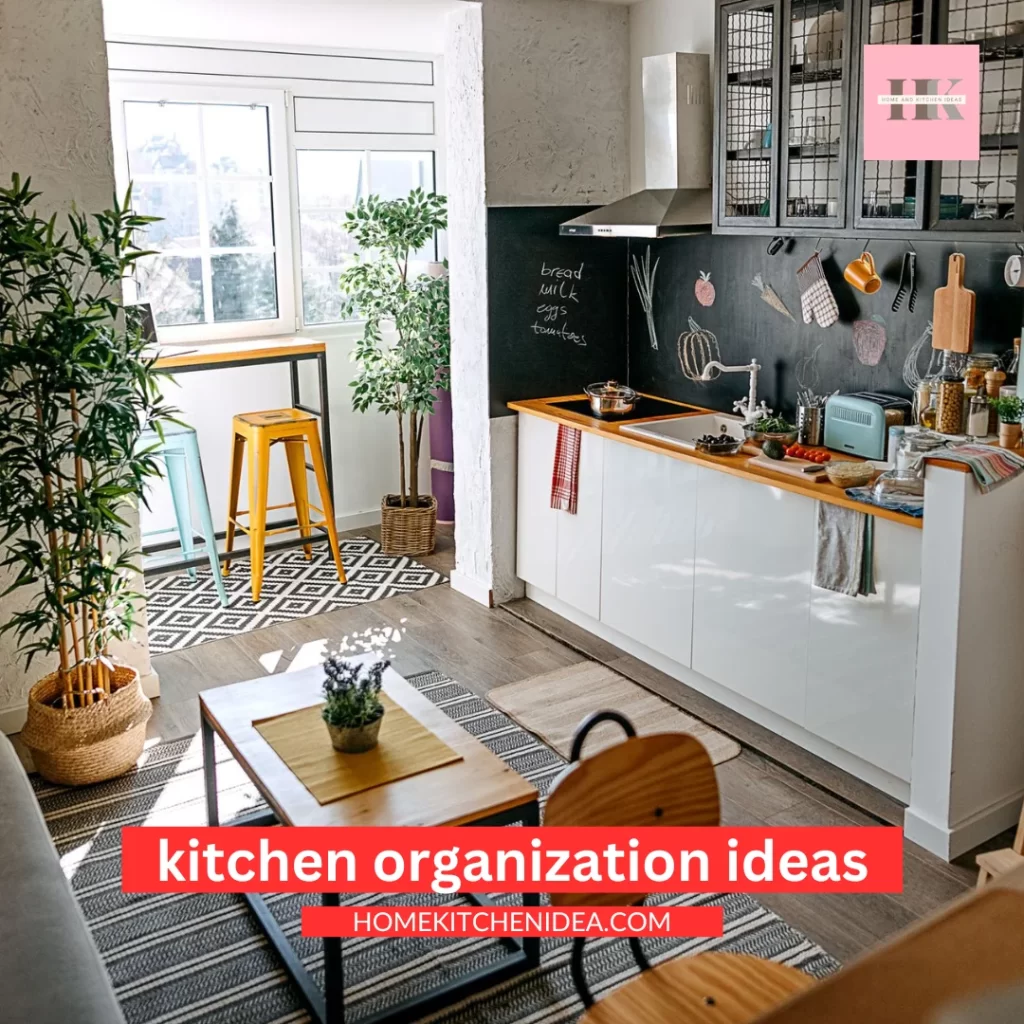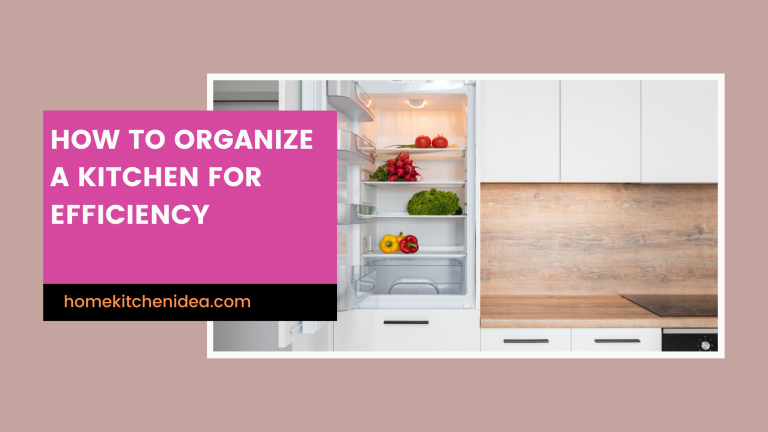19 Powerful kitchen Organization Ideas to Unlock the Secrets to Functional Kitchen
In this article, we will explore the best kitchen organization ideas and provide a step-by-step guide for organizing kitchen cabinets, and offer practical tips for arranging a small kitchen.

A well-organized kitchen not only enhances functionality but also creates a pleasant cooking environment. If you find yourself struggling to locate utensils and ingredients, or battling cluttered cabinets, it’s time to revamp your kitchen organization.
Section 1: The Best Way to Organize Your Kitchen Organizing your kitchen can seem like a daunting task, but with a systematic approach, it becomes manageable. Here are some essential steps to follow:
- Assess and declutter: Start by taking stock of your kitchen items. Discard expired food, donate unused appliances, and eliminate unnecessary clutter.
- Group similar items: Categorize your kitchen essentials into groups such as baking supplies, cooking utensils, spices, and pantry items. This will make it easier to locate and access what you need.
- Optimize storage space: Utilize your cabinet and drawer space efficiently by using organizers, racks, and dividers. Maximize vertical space with stackable containers and adjustable shelves.
- Create designated zones: Allocate specific areas for different activities, such as a baking station, prep area, and cooking zone. This streamlines the cooking process and saves time.
Section 2: 10 Steps to Organizing Kitchen Cabinets When it comes to organizing kitchen cabinets, a structured approach can transform chaos into order. Here’s a 10-step guide to help you get started:
- Empty the cabinets: Remove everything from your cabinets and wipe them clean.
- Sort and declutter: Assess each item’s usefulness and decide what to keep, donate, or discard.
- Group similar items: Group similar items together, such as plates, glasses, pots, and pans.
- Utilize vertical space: Use shelf risers to maximize vertical storage space and make items more accessible.
- Install cabinet organizers: Consider installing pull-out shelves, lazy susans, or door-mounted racks to maximize cabinet space and improve accessibility.
- Label containers: Use clear containers and label them for easy identification of food items or ingredients.
- Arrange by frequency of use: Keep frequently used items within reach and place seasonal or rarely used items in higher or lower cabinets.
- Store lids efficiently: Use lid organizers or mount a tension rod inside a cabinet to store pot lids neatly.
- Maintain order: Regularly declutter and reorganize your cabinets to prevent clutter from accumulating.
- Enjoy the benefits: Admire your well-organized cabinets and revel in the ease and efficiency they bring to your daily kitchen routines.
Section 3: Arranging a Small Kitchen A small kitchen can pose unique challenges, but with strategic planning, you can make the most of the available space. Consider the following tips:
- Opt for compact appliances: Choose smaller-sized appliances that fulfill your needs without taking up excessive counter or storage space.
- Embrace vertical storage: Install wall-mounted shelves, hooks, or magnetic strips to utilize vertical space for storing utensils, pots, and pans.
- Use multifunctional furniture: Invest in furniture pieces that serve multiple purposes, such as an island with built-in storage or a table with hidden compartments.
- Clear the countertops: Keep the countertops clutter-free by storing frequently used items in easily accessible drawers or cabinets.
- Maximize cabinet space: Utilize every inch of your cabinet space by using stackable containers, adjustable shelves, and drawer organizers.
Conclusion: By implementing the strategies and ideas outlined in this article, you can transform your kitchen into a well-organized and efficient space. Remember to customize the organization
Kitchen Organization Ideas
What is the best way to organize your kitchen?
The best way to organize your kitchen is to follow a systematic approach. Here are the key steps to consider:
- Assess and declutter: Start by assessing your kitchen items and decluttering. Get rid of expired food, donate unused appliances, and eliminate unnecessary clutter to create a clean slate for organizing.
- Group similar items: Categorize your kitchen essentials into groups such as baking supplies, cooking utensils, spices, and pantry items. This grouping makes it easier to find and access what you need.
- Optimize storage space: Make the most of your cabinet and drawer space by using organizers, racks, and dividers. Stackable containers and adjustable shelves can help maximize vertical space.
- Create designated zones: Allocate specific areas for different activities within your kitchen, such as a baking station, prep area, and cooking zone. This helps streamline the cooking process and saves time by having everything in its place.
What are the 10 steps to organizing kitchen cabinets?
Follow these 10 steps to organize your kitchen cabinets effectively:
- Empty the cabinets: Begin by emptying all the contents of your cabinets and giving them a thorough cleaning.
- Sort and declutter: Assess each item’s usefulness and decide what to keep, donate, or discard. Removing unnecessary items creates more space for the essentials.
- Group similar items: Group similar items together, such as plates, glasses, pots, and pans. This grouping makes it easier to locate specific items when needed.
- Utilize vertical space: Make use of shelf risers to maximize vertical storage space. This allows you to stack items without sacrificing accessibility.
- Install cabinet organizers: Consider installing pull-out shelves, lazy susans, or door-mounted racks to optimize cabinet space and improve access to items.
- Label containers: Use clear containers to store food items or ingredients, and label them for easy identification. This reduces confusion and saves time when cooking or baking.
- Arrange by frequency of use: Keep frequently used items within easy reach, placing them in cabinets that are easily accessible. Store seasonal or rarely used items in higher or lower cabinets.
- Store lids efficiently: Use lid organizers or mount a tension rod inside a cabinet to store pot lids neatly. This prevents them from cluttering the cabinet and makes them easily accessible.
- Maintain order: Regularly declutter and reorganize your cabinets to prevent clutter from accumulating again. Take a few minutes each month to reassess and make adjustments as needed.
- Enjoy the benefits: Step back and appreciate the organized cabinets that bring ease and efficiency to your daily kitchen routines.
How can I arrange my small kitchen?
Arranging a small kitchen requires smart utilization of space. Consider the following tips:
- Opt for compact appliances: Choose smaller-sized appliances that fulfill your needs without taking up excessive counter or storage space. Look for compact models designed for smaller kitchens.
- Embrace vertical storage: Make use of wall-mounted shelves, hooks, or magnetic strips to utilize vertical space. Hang utensils, pots, and pans to free up counter and cabinet space.
- Use multifunctional furniture: Invest in furniture pieces that serve multiple purposes. For example, an island with built-in storage can provide extra counter space and additional storage options. A table with hidden compartments can offer both dining and storage functionality.
- Clear the countertops: Keep the countertops clutter-free by storing frequently used items in easily accessible drawers or cabinets. This creates more workspace for food preparation and cooking.
- Maximize cabinet space: Utilize every inch of your cabinet
Great list of Informational posts worth reading



